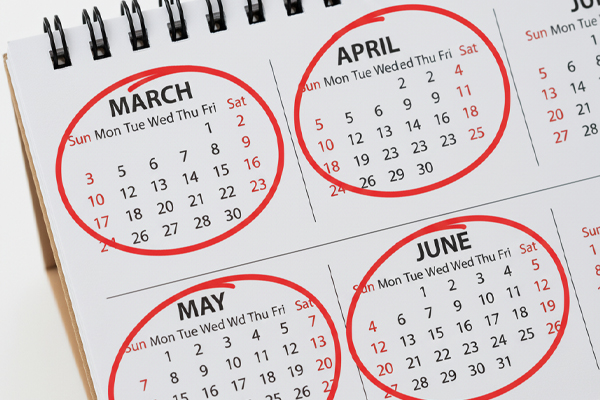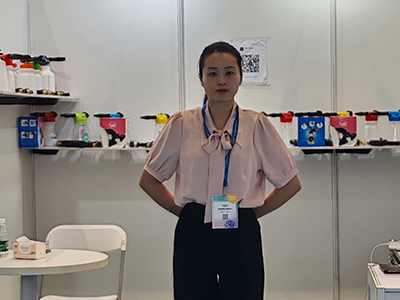You're looking to invest in the car wash product industry, aiming for steady, year-round profits. But you worry about unpredictable sales slumps that could hurt your cash flow and stop your growth.
The single biggest weakness in the car wash business is its short peak season1. The majority of sales happen between March and June. Success depends entirely on using the long off-season2 to prepare inventory, logistics, and strategy for this critical four-month window.

I’ve been in this industry for over fifteen years. I have seen its brilliant moments and its quiet ones. Like any business, it has its strengths and weaknesses, just as every person does. And if you ask me for the core weakness of the car wash product industry, my answer is simple: the peak season is very short. Understanding this is not a reason to avoid the business. In fact, understanding this rhythm is the secret to mastering it and achieving long-term success.
Why is the peak sales season so short?
Your sales are strong one quarter and then drop significantly the next. You might blame your product or your marketing, but the real reason is much more fundamental and predictable.
The peak season is short because car washing involves water. People are much more willing to wash their cars and handle cold water during the warmer months. This consumer habit3 concentrates the highest demand into the spring and early summer, from about March to June.

It's a very simple, human reason. Think about it. Washing a car means getting your hands wet and being around splashes of water. In the cold of October or December, this is not a pleasant activity for most people. But in the warmth of April or May, it's refreshing. This behavior directly impacts sales. While some professional detailers work year-round, the huge market of DIY car owners4 is highly seasonal. They buy their soaps, sprayers, and brushes in preparation for the sunny weekends ahead. This creates a huge surge in demand during this specific time. The rest of the year is much quieter. So, the problem isn't your product; it's the weather. Recognizing this allows you to stop fighting the calendar and start using it to your advantage.
How do you prepare for the peak season?
You know the peak season is coming, but you underestimate the timeline. This leads to missed opportunities, with your products arriving late or your shelves empty when customers are ready to buy.
Preparation must start in the off-season. You should have your inventory plan5 for the next year finalized and produced by November at the latest. This timeline accounts for production, two months of shipping, and the time required for retail distribution before the March rush.

The timeline is everything. If you wait until January to think about your peak season stock, you have already lost. The entire game is won or lost in the "quiet" months. Here is a realistic look at the schedule you need to follow to be successful.
| Month(s) | Key Activity | Purpose |
|---|---|---|
| July - October | Strategy & Planning | Analyze the past season's sales. Decide on product mix for next year. |
| November | Finalize Orders | Place your large stock orders with your manufacturing partner. |
| December - January | International Shipping | Your products are on a container ship, making their way to your country. |
| February | Distribution & Stocking | Your products arrive, clear customs, and are sent to warehouses or retail stores. |
| March - June | Golden Sales Period | This is the peak. Your only job is to sell, because all preparation is complete. |
This isn't a suggestion; it's the operational reality of this business. The off-season is not downtime. It is the most important work time you have. It's when you lay the foundation for the entire year's profit.
What should you do during the off-season?
The sales rush from March to June is over, and business slows down. You might feel discouraged by the drop in activity and be unsure of how to use this time productively.
The off-season, from July to October, is your strategic planning period. This is when you analyze sales data6, adjust your product lineup7, and plan your marketing for the next peak season. This quiet time is your greatest competitive advantage8 if used correctly.

While the golden sales period is exciting, the off-season is where you make your money for the following year. This is the time for thinking, not just reacting. What sold best? What product had the best profit margin, even if it wasn't the highest volume? Did customers ask for anything you didn't have? This period, from July to October, is your window to have deep conversations with your manufacturing partner. You can discuss new product development, adjust your order quantities, and refine your approach. For example, you might decide to order more of a high-profit item and less of a low-margin one. Or you might work with your partner on a new promotional bundle9 for the next spring. Using these months to fine-tune your strategy ensures that when the next peak season hits, you are not just repeating the past year; you are executing a smarter, more profitable plan.
Conclusion
The car wash industry's weakness is its short season, but for a smart business owner, this is its greatest strength. It gives you a predictable rhythm to plan, prepare, and dominate the market.
Understanding the challenges of a short peak season can help you strategize effectively for your car wash business. ↩
Exploring off-season strategies can provide insights on maximizing profits during quieter months. ↩
Exploring consumer habits can help you align your marketing strategies with customer behavior. ↩
Understanding DIY car owners' preferences can help you tailor your product offerings effectively. ↩
A solid inventory plan is crucial for success; learn how to optimize yours for better results. ↩
Analyzing sales data can provide valuable insights for refining your business strategy and boosting profits. ↩
Optimizing your product lineup can lead to increased sales; learn how to make informed decisions. ↩
Identifying ways to create a competitive advantage can set your business apart in a crowded market. ↩
Creating effective promotional bundles can attract more customers; explore strategies to enhance your offerings. ↩
